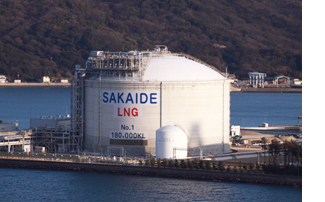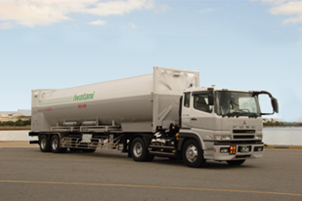Transporting and Storing Cryogenic Liquefied Gases
Technologies for transporting cryogenic liquefied gases safely and reliably.
LNG Tank Technology
An LNG (liquefied natural gas) tank has a double containment structure, consisting of an inner tank made of a material that maintains its strength and toughness even at an extremely low temperature (-162℃) and an outer tank that holds the refrigerant.
In addition, a PC-LNG tank integrates the function of a protective dike to be prepared for an LNG leak by using pre-stressed concrete (PC), to which a compression force has been applied in advance to enhance its strength, for the outer tank. Therefore, compared to conventional tanks, it can not only offer increased safety, but also reduce the installation area, thus enabling effective utilization of the site.
The PC-LNG tank boasts the largest capacity in the world at 180,000 KL, and is capable of receiving one large LNG tanker's worth of LNG at once.
We also provide full turnkey construction services for LNG receiving bases featuring 180,000 KL capacity PC-LNG tanks.

PC-LNG tank (180,000 KL capacity)

LNG receiving base
Liquefied Hydrogen Container Technology
Hydrogen is the ultimate low-carbon energy as it emits no CO2 at all.
Large quantities of hydrogen can be transported most effectively if the hydrogen is liquefied to minimize its volume (to 1/800 that of hydrogen gas) by cooling it to -253°C, a temperature even lower than that of LNG (-162°C). In order to accomplish this, however, a transportation tank with highly efficient insulation that can block external heat is required to maintain this ultra-low temperature.
KHI has developed and commercialized Japan's first liquefied hydrogen transportation tanks (compatible with ISO standards for 40-ft containers) by leveraging its extensive track record in cryogenic technologies, such as the building of liquefied hydrogen facilities at the rocket launch complex on Tanegashima island.

Liquefied hydrogen container





